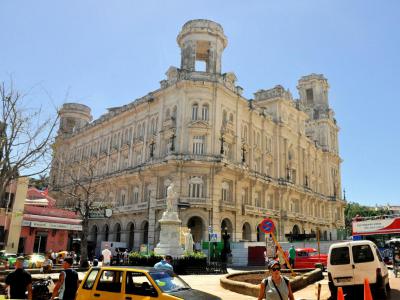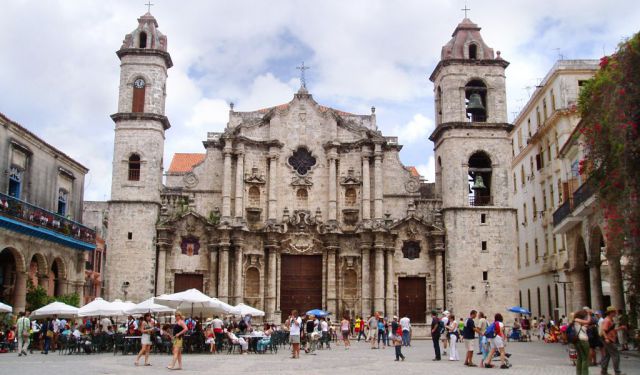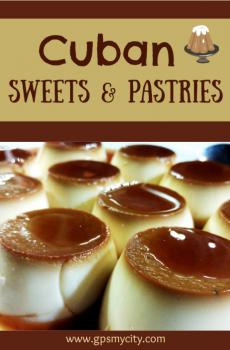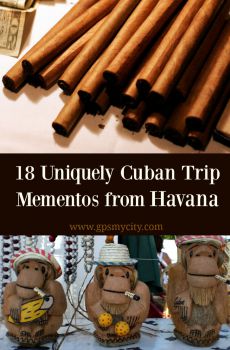National Museum of Fine Arts, Havana (must see)
The National Museum of Fine Arts of Havana (Museo Nacional de Bellas Artes de La Habana) is a premier Cuban institution dedicated to the preservation and exhibition of art. Since its establishment on February 23, 1913, under the guidance of its inaugural director, architect Emilio Heredia, the museum has been pivotal in showcasing Cuban art spanning from colonial times to the present.
The museum's journey to its current status involved several relocations until it found a permanent home in what used to be the old Colon Market. The construction of a new Palace of Fine Arts (Palacio de Bellas Artes) in 1954, designed by architect Rodriguez Pichardo, marked a significant milestone in its history, offering a modern space for Cuban art collections.
Today, the museum comprises two distinct buildings: the Palace of Fine Arts, focusing on Cuban art, and the Palace of the Asturian Center
(Palacio del Centro Asturiano), which features universal art. The Palace of Fine Arts exclusively showcases Cuban artworks from the 17th to the 19th centuries, including landscape and religious paintings, as well as Costumbrismo scenes depicting Cuban life. The gallery dedicated to the 1970s highlights Hyperrealism and contemporary Cuban art, featuring prominent artists like René Portocarrero and Wifredo Lam. Renowned for its significant artworks, the museum also displays creations by Cuban artists such as Leopoldo Romañach, Víctor Manuel, and many others, alongside a modernist sculpture by Rita Lonja at the entrance.
On the other hand, the Palace of the Asturian Center, designed by Manuel Bustos in 1927, presents an array of European art and sculptures, as well as ancient art collections. This building, originally a social club for individuals from Asturias, Spain, transitioned to a cultural space after the 1959 Revolution and even served as the Supreme Court of Justice.
Why You Should Visit:
To explore a modern well-designed art exhibition with lots of pieces by Cuban artists that really capture the culture and spirit of the country.
It is also exciting to try and understand how art functions under a communist regime and how the art world and politics intersect.
Tip:
You cannot take in any backpacks – these must be checked for free before you enter.
Once inside, be sure to get a docent to give you a Spanish/English tour. They are excellent.
Be advised, that all the art belongs to the state, and if you even attempt to take a photo you will be stopped.
On a side note, the prettiest buildings that everyone wants to take pictures of are on the Paseo de Marti adjacent, as you walk down toward the ocean.
The museum's journey to its current status involved several relocations until it found a permanent home in what used to be the old Colon Market. The construction of a new Palace of Fine Arts (Palacio de Bellas Artes) in 1954, designed by architect Rodriguez Pichardo, marked a significant milestone in its history, offering a modern space for Cuban art collections.
Today, the museum comprises two distinct buildings: the Palace of Fine Arts, focusing on Cuban art, and the Palace of the Asturian Center
(Palacio del Centro Asturiano), which features universal art. The Palace of Fine Arts exclusively showcases Cuban artworks from the 17th to the 19th centuries, including landscape and religious paintings, as well as Costumbrismo scenes depicting Cuban life. The gallery dedicated to the 1970s highlights Hyperrealism and contemporary Cuban art, featuring prominent artists like René Portocarrero and Wifredo Lam. Renowned for its significant artworks, the museum also displays creations by Cuban artists such as Leopoldo Romañach, Víctor Manuel, and many others, alongside a modernist sculpture by Rita Lonja at the entrance.
On the other hand, the Palace of the Asturian Center, designed by Manuel Bustos in 1927, presents an array of European art and sculptures, as well as ancient art collections. This building, originally a social club for individuals from Asturias, Spain, transitioned to a cultural space after the 1959 Revolution and even served as the Supreme Court of Justice.
Why You Should Visit:
To explore a modern well-designed art exhibition with lots of pieces by Cuban artists that really capture the culture and spirit of the country.
It is also exciting to try and understand how art functions under a communist regime and how the art world and politics intersect.
Tip:
You cannot take in any backpacks – these must be checked for free before you enter.
Once inside, be sure to get a docent to give you a Spanish/English tour. They are excellent.
Be advised, that all the art belongs to the state, and if you even attempt to take a photo you will be stopped.
On a side note, the prettiest buildings that everyone wants to take pictures of are on the Paseo de Marti adjacent, as you walk down toward the ocean.
Want to visit this sight? Check out these Self-Guided Walking Tours in Havana. Alternatively, you can download the mobile app "GPSmyCity: Walks in 1K+ Cities" from Apple App Store or Google Play Store. The app turns your mobile device to a personal tour guide and it works offline, so no data plan is needed when traveling abroad.
National Museum of Fine Arts on Map
Sight Name: National Museum of Fine Arts
Sight Location: Havana, Cuba (See walking tours in Havana)
Sight Type: Museum/Gallery
Sight Location: Havana, Cuba (See walking tours in Havana)
Sight Type: Museum/Gallery
Walking Tours in Havana, Cuba
Create Your Own Walk in Havana
Creating your own self-guided walk in Havana is easy and fun. Choose the city attractions that you want to see and a walk route map will be created just for you. You can even set your hotel as the start point of the walk.
Hemingway's Havana Walking Tour
Ever since Hemingway first visited Cuba in 1928 until his death in 1961, he felt an intense connection with the people and culture of Cuba. Hemingway lived at Hotel Ambos Mundos during the 1930s, and began, wrote, and finished several novels there. Today, you can see some of Hemingway's belongings in Room 511.
Hemingway was a frequent patron at El Floridita, famous for its daiquiris.... view more
Tour Duration: 1 Hour(s)
Travel Distance: 1.1 Km or 0.7 Miles
Hemingway was a frequent patron at El Floridita, famous for its daiquiris.... view more
Tour Duration: 1 Hour(s)
Travel Distance: 1.1 Km or 0.7 Miles
Old Town Walking Tour
The Spanish founded Havana in 1519. After French pirate Jacques de Sores ransacked the city in 1555, the Castle of the Royal Force was built to protect the city.
Havana became a major stopping point between the newly discovered Americas and ancient Europe. In the 1600s, Havana was a major shipbuilding port.
Old Havana is listed as a UNESCO World Heritage Site. The historic city has five... view more
Tour Duration: 2 Hour(s)
Travel Distance: 2.7 Km or 1.7 Miles
Havana became a major stopping point between the newly discovered Americas and ancient Europe. In the 1600s, Havana was a major shipbuilding port.
Old Havana is listed as a UNESCO World Heritage Site. The historic city has five... view more
Tour Duration: 2 Hour(s)
Travel Distance: 2.7 Km or 1.7 Miles
Historical Churches and Cathedrals Walking Tour
Discovered and conquered by Spanish colonists in the early 16th century, Havana has turned into a major religious center of Catholicism in the Caribbean. Although a communist regime is currently in power, many of the churches, cathedrals, and other religious buildings have been preserved and still give a glimpse of the city’s religious heritage.
The old Havana Cathedral, located in a... view more
Tour Duration: 2 Hour(s)
Travel Distance: 3.1 Km or 1.9 Miles
The old Havana Cathedral, located in a... view more
Tour Duration: 2 Hour(s)
Travel Distance: 3.1 Km or 1.9 Miles
Old Palaces Walking Tour
Havana has been the seat of Cuba’s ruling gentry for centuries. Today, you can walk the streets of Old Havana and explore its palaces to get a glimpse into the city’s royal past. Although these structures now serve Havana’s citizens and visitors, they still catch your eye (and your camera lens!) with their architecture and history.
Start your trip with the ornate Presidential Palace,... view more
Tour Duration: 1 Hour(s)
Travel Distance: 2.1 Km or 1.3 Miles
Start your trip with the ornate Presidential Palace,... view more
Tour Duration: 1 Hour(s)
Travel Distance: 2.1 Km or 1.3 Miles
Useful Travel Guides for Planning Your Trip
Cuban Sweets and Pastries
On the tropical island where sugar cane is one of the main commodities along with the rum made of the very same sugar, and where the enormous abundance of tropical fruits make up a great deal of the local diet, it is only natural to expect the richness of dessert cuisine. Pair it with the strong...
18 Uniquely Cuban Things to Buy in Havana
Rum, cigars and revolution have been, perhaps, at least until recently, the three most popular exports from Cuba. Luckily, with the embargo lifted (or soon to be lifted), those traveling to the U.S. might soon be able to pick up some of these (with the exception of revolution, perhaps) on their way...









